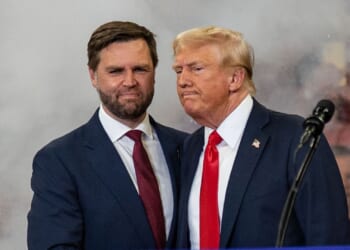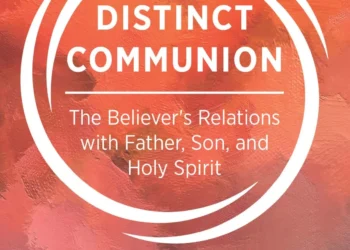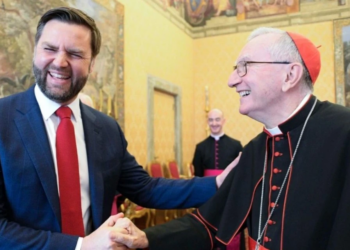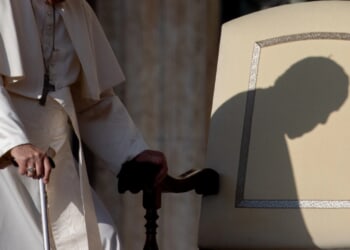The press has speculated on the nature of President Trump’s relationship with Russia. This has gone as far as to suggest that he is a possible ‘Russian Asset’ or ‘Agent of Influence’. This seems fantastical and reminds one of the plot of Richard Conlon’s 1959 novel, The Manchurian Candidate. What evidence have conspiracy-minded critics produced to support their allegations?
In February 2025, a man called Alnur Mussayev, a former K.G.B. officer, posted on Facebook that Donald Trump was recruited by the K.G.B. whilst visiting Moscow in 1987. Mussayev stated that Trump was given the codename ‘Krasnov’. Now, there are two problems regarding this story: Mussayev was not a K.G.B. Agent in 1987 and when he eventually did join, he did not work for the section recruiting foreign spies. However, it is certain that Trump did visit the Soviet Union in 1987.
The allegations of Soviet links to Trump are said to date back to 1977 and initially involved the Czechoslovak Socialist Republic’s intelligence service, the StB. The Czechs noticed Trump following his marriage to Czech citizen Ivana Marie Zelnickova on 9th April 1977 at the Marble Collegiate Church in Manhattan.
The story of Trump meeting Ivana at a New York restaurant in 1976 and securing a table for her and her friends is frequently told. However, there is some mystery how she came to be there. Ivana was born in the Zlin region of Moravia in February 1949. Her father was a Czech engineer, whilst her mother was an Austrian who defected to Czechoslovakia after the War. When studying at Charles University in Prague, Ivana dated a young songwriter and playwriter called Jiri Staidl, who is reputed to have had connections with the Communist elite. Through this relationship, Ivana attended social gatherings hosted by the Nomenklatura. At some point, she decided to live in the West, but achieving this was difficult, as Eastern Bloc residents had no automatic right of exit.
In 1971, Ivana, who was a noted amateur skier, married an Austrian ski instructor called Alfred Winklmayr and obtained an Austrian passport the following year. This enabled her to leave Czechoslovakia without defecting, so she could return to see her parents as she wished.
The marriage appears to have been a sham from the start. Winklmayr obtained work in California, leaving Ivana in Austria. An ‘absentee divorce’ was obtained by Ivana in 1973. Strangely, as late as 1990, Ivana’s American lawyer, Michael Kennedy, threatened legal action against anyone publishing mention of this first marriage. Next, Ivana moved to Canada, where she worked as a Ski Instructor and Model. It was whilst undertaking promotional work for the 1976 Montreal Olympics that she visited New York and met Donald Trump.
It is worth noting that the StB, as a matter of course, maintained surveillance of nationals living overseas. Therefore, they were highly interested when one of their citizens married an American billionaire.
StB files now available (all officially declassified in 2016) show that from 1978, Ivana was under surveillance and an “operative file” was opened on her. The agents who spied on her, and who updated her file, went under the codenames “Langr” and “Chod”. Whenever she returned to see her family, she met with a friend who it appears subsequently updated her StB file.
The Prague files also reveal that Ivana’s father, Milos Zelnicek, was monitored by the StB and became a regular “conspiratorial” informant. His telephone calls to his daughter were wiretapped and letters to her parents were opened. However, Milos was not “in the StB”, as some have suggested, but co-opted by them to report on his daughter and son-in-law. Petr Blazek of the Institute for the Study of Totalitarian Regimes in Prague commented: “He provided information that the secret police found out anyway from other sources. There is no indication that he was handing over compromising materials on them.”
Czech files show that the StB documented Trump’s business deals, public statements and activities. There is no doubt that the StB had a broad strategy of cultivating influential Westerners, but there is no evidence of an approach to Trump on the files.
According to K.G.B. officer Yury Shvets, the first contact between Trump and the Soviets occurred in 1980, when Trump was renovating a New York hotel destined to become the Grand Hyatt. He purchased 200 television sets from a dealer called Semyon Kislin (known as ‘Sam’), who was originally from Ukraine and who worked as a K.G.B. “spotter agent.”
In 1984, General Vladimir Alexandrovich Kryuchkov, Head of the K.G.B.’s First Chief Directorate, the section responsible for gathering foreign intelligence, wished to recruit more Americans. Kryuchkov sent secret memos to K.G.B. station heads across the West on how to improve recruitment. He wanted the organisation to be more creative and not just target the ideologically sympathetic. They were told to “make bold use of material incentives” and flattery was identified as a component. Unknown to the Russians was that one station head, Oleg Gordievsky, passed these memos onto MI6.
Trump records in The Art of the Deal that the origin of his first Moscow trip came a year earlier in 1986, when he sat next to Soviet U.S. Ambassador, Yuri Dubinin, at a luncheon hosted by Leonard Lauder, Estee Lauder’s son. Describing the conversation, he writes: “One thing led to another, and now I’m talking about building a large luxury hotel, across the street from the Kremlin, in partnership with the Soviet government.”
Natalia Dubinina, the Ambassador’s daughter, has stated that the Soviets made a determined effort to arrange this apparently spontaneous meeting. She alleges that the men first met six months earlier, when Dubinina visited Trump tower and flattered Trump by exclaiming, “The first thing I saw in the city is your tower!”, Natalia remarked: “My father’s visit worked on him like honey to a bee.”
Trump admits that in January 1987 he received a letter from Ambassador Dubinin informing him that the Soviet state tourist agency (Intourist, an arm of the K.G.B.) was interested in pursuing a joint venture to build a luxury hotel in Moscow. The Embassy organised a visit and on 4th July 1987, Trump and Ivana flew to Moscow.
The Soviets rolled out the red carpet for them, including staying in the National Hotel’s Lenin Suite (Lenin had stayed there in October 1917), near Red Square. Trump toured by his own account “…half a dozen potential sites for a hotel, including several near Red Square”. He then moved onto Leningrad. Businesswise, nothing came of this visit, but when Trump returned home, he did the most extraordinary thing.
By September 1987, with the Cold War and the U.S.S.R. both nearing their conclusion, the Reagan strategy of outspending the Soviets on arms was accruing dividends. The two countries edged towards negotiations and America held the winning cards.
At this moment, Trump spent between $90-$100,000 on full page advertisements in the Washington Post, New York Times and Boston Globe, denouncing Reagan and N.A.T.O.’s strategy. Addressed to the “American people”, Trump said that there was nothing wrong with American foreign policy “that a little backbone can’t cure”. He then said that Japan and N.A.T.O.’s European members should pay for their own defence. It was a clever line, aimed at whipping up nationalist resentment, but also one that chimed with Kremlin fears that the Western Bloc was undefeatable if not subverted.
For the record, Trump never liked Reagan and once remarked that whilst he had been “so smooth, so effective a performer”, that “only seven years later, are people beginning to question whether there is anything beneath that smile”.
Trump revisited Moscow in 1996 (shortly after his near bankruptcy in the Atlantic City casino business), 2007 and 2013 to develop business ties but none of these visits met with much success. His son, Donald Junior, equally travelled to Russia during the 2000s and announced in 2008 that “Russians make up a pretty disproportionate cross-section of a lot of our assets”. When talking about a building project in New York, he remarked: “We see a lot of money pouring in from Russia.”
So, what conclusions can we draw about Trump’s relationship with Russia and her allies? Firstly, in the first hundred days of his second term, Trump publicly denounced Zelenskyy, significantly undermined the N.A.T.O. alliance, threatened Canada and Greenland with American occupation and imposed tariffs on all his allies, whilst keeping them off Russia. Secondly, on 8th August 2022, an F.B.I. search of Mar-a-Lago found that the then former President was in possession of 13,000 government documents, over 300 of which were classified, with some relating to national defence secrets covered under the Espionage Act. Thirdly, excepting his response to the Salisbury poisonings, Trump has consistently supported closer ties with Russia. He is certainly the most pro-Russian U.S. President in history. However, fourthly and finally, despite having Russian ties for decades, it must be said that no smoking gun has yet been discovered to “prove” that he has ever operated as a Russian Agent of any sort. All evidence presented here is circumstantial.

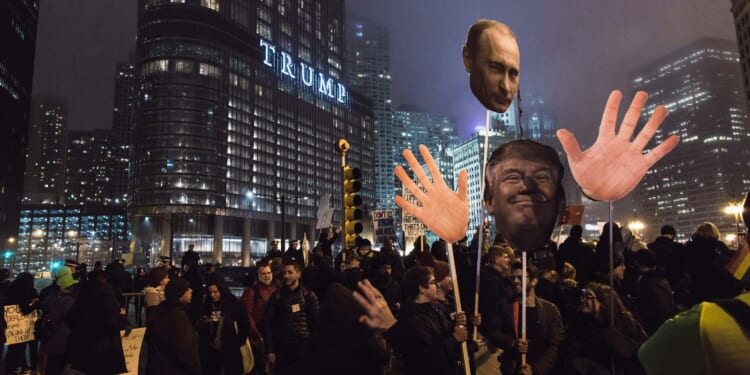
![Frontier Airline Agents Fired After Video Mocking Passenger on Camera Goes Viral [WATCH]](https://www.right2024.com/wp-content/uploads/2025/05/Frontier-Airline-Agents-Fired-After-Video-Mocking-Passenger-on-Camera-350x250.jpg)



![NYT Covered for Illegal Alien Accused of Raping a Corpse on NYC Subway [WATCH]](https://www.right2024.com/wp-content/uploads/2025/05/NYT-Covered-for-Illegal-Alien-Accused-of-Raping-a-Corpse-350x250.jpg)
![Trump Posts Hilarious Pope Meme, Leftists Immediately Melt Down [WATCH]](https://www.right2024.com/wp-content/uploads/2025/05/Trump-Posts-Hilarious-Pope-Meme-Leftists-Immediately-Melt-Down-WATCH-350x250.jpg)
![James Comer Hints at the Epic Behind-the-Scenes Effort Targeting the Deep State [WATCH]](https://www.right2024.com/wp-content/uploads/2025/04/James-Comer-Hints-at-the-Epic-Behind-the-Scenes-Effort-Targeting-the-350x250.jpg)
